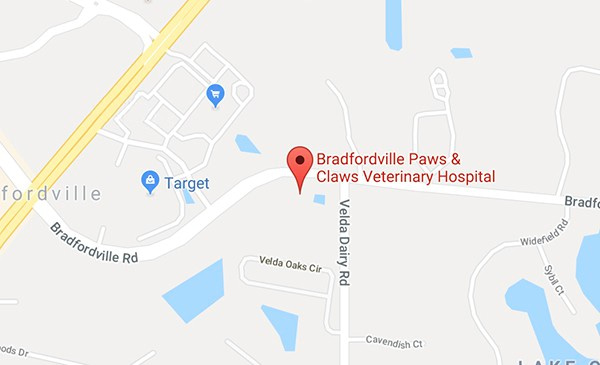As pets get older, it’s common for them to slow down a little, but if your dog hesitates before climbing the stairs or your cat no longer jumps onto their favorite windowsill, the cause might be more than age. Arthritis is one of the most common health conditions affecting senior pets, and it can significantly impact their mobility, comfort, and quality of life.
The good news is that with early detection and proper management, arthritis doesn’t have to mean a life of discomfort. Understanding the signs, knowing when to seek veterinary care, and taking proactive steps can help your pet stay active and happy for years to come.
What is Arthritis?
Arthritis, also known as degenerative joint disease, is a condition that causes inflammation and gradual deterioration of the joints. Over time, the protective cartilage that cushions the bones begins to wear down, leading to pain, stiffness, and reduced mobility. While arthritis is most common in senior dogs and cats, it can also develop in younger pets due to factors such as injury, genetics, or joint abnormalities.
In dogs, arthritis most often affects the hips, knees, shoulders, and elbows. Cats may experience arthritis in their spine, hips, or knees—though their symptoms can be much harder to spot. Because cats tend to hide discomfort, many pet owners don’t realize their cat is suffering until the condition has progressed.

Although arthritis cannot be cured, early diagnosis and proper treatment can significantly slow its progression and improve your pet’s quality of life. With the right care, pets with arthritis can continue to enjoy daily walks, playtime, and the companionship of their families.
Common Signs of Arthritis in Dogs and Cats
Recognizing the signs of arthritis early is key to helping your pet stay comfortable and active. Because arthritis develops gradually, many pet owners mistake the first signs for “normal aging.” Paying attention to subtle changes in your pet’s behavior or movement can make a big difference in catching the condition early.
Arthritis Symptoms in Dogs
Dogs with arthritis often show visible signs of discomfort or reluctance to move. You may notice:
-
Stiffness or limping, especially after resting or first thing in the morning
-
Difficulty climbing stairs, jumping into the car, or getting onto furniture
-
Reluctance to go on walks or play
-
Slower movements or shorter strides when walking
-
Yelping, whimpering, or other signs of pain when touched
-
Licking or chewing at sore joints
Arthritis Symptoms in Cats
Cats are experts at hiding pain, which can make arthritis harder to detect. Look for these subtle changes:
-
Hesitation or inability to jump onto furniture or windowsills
-
Reduced grooming or a messy, unkempt coat
-
Changes in litter box habits, such as avoiding high-sided boxes
-
Decreased activity or spending more time sleeping
-
Irritability or withdrawal when handled
If you notice any of these behaviors, it’s a good idea to schedule an exam with your veterinarian. Even mild stiffness can indicate early joint changes, and the sooner treatment begins, the better the outcome for your pet.
Treatment Options for Pet Arthritis
While arthritis cannot be cured, there are many effective ways to reduce pain, improve mobility, and slow the progression of the disease. The best treatment plan depends on your pet’s age, overall health, and the severity of their symptoms. At Paws and Claws Veterinary Hospital, we take a comprehensive approach to arthritis management that combines medical treatment, lifestyle adjustments, and ongoing monitoring.
Medications and Supplements
Veterinary-prescribed medications such as nonsteroidal anti-inflammatory drugs (NSAIDs) can help control pain and inflammation. Joint supplements that include glucosamine, chondroitin, and omega-3 fatty acids can also support cartilage health and reduce stiffness. It’s important to use only products recommended by your veterinarian, as over-the-counter human medications can be dangerous for pets.
Weight Management and Exercise
Maintaining a healthy weight is one of the most effective ways to reduce joint strain and slow arthritis progression. Even a few extra pounds can put added pressure on your pet’s joints. Controlled, low-impact exercise—such as short walks for dogs or gentle play sessions for cats—helps keep muscles strong and joints flexible.
Physical Therapy and Laser Therapy
Therapies such as rehabilitation exercises, massage, or laser therapy can enhance mobility and reduce pain. These treatments help increase blood flow to affected areas, decrease inflammation, and promote healing. Ask your veterinarian if your pet could benefit from one or more of these supportive therapies.
Creating a Comfortable Home Environment
Small changes at home can make a big difference for pets with arthritis. Provide a warm, padded bed in a quiet area, use ramps or steps to help your pet reach favorite spots, and keep food and water bowls easily accessible. Non-slip rugs or mats can also help prevent falls on smooth floors.
With the right combination of treatments and ongoing veterinary care, most pets with arthritis can continue to live comfortably and enjoy an excellent quality of life.
Schedule An Appointment Today
At Paws and Claws Veterinary Hospital in Tallahassee, we understand how difficult it can be to see your pet in pain. Our goal is to provide the best possible care for dogs and cats living with arthritis, helping them stay comfortable and active at every stage of life.
Our veterinary team takes the time to thoroughly evaluate each pet’s condition and develop a customized arthritis management plan. Depending on your pet’s needs, this may include diagnostic imaging, prescription medications, nutritional support, and therapeutic treatments such as laser therapy or rehabilitation exercises. We also work closely with pet owners to create realistic at-home care plans that complement in-clinic treatment.
Beyond medical care, we believe in building lasting relationships with both pets and their families. Our team is here to answer your questions, adjust treatment plans as your pet’s needs change, and provide ongoing support for pain management and quality of life.
Whether your dog is just beginning to show signs of joint stiffness or your senior cat is struggling to jump and move comfortably, we’re here to help.

